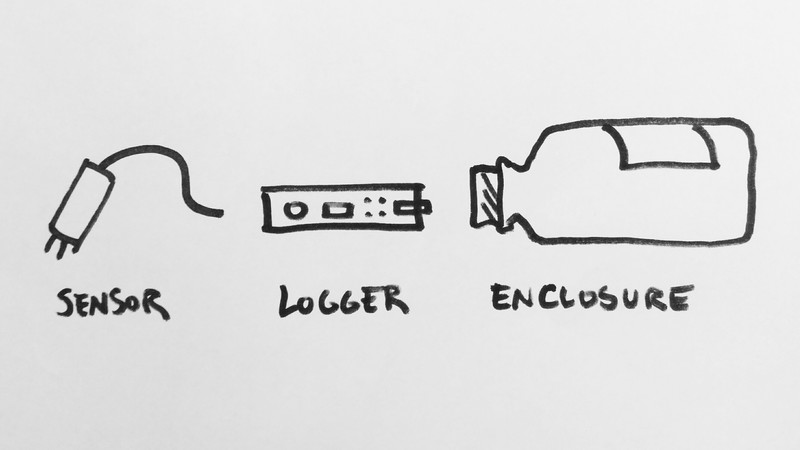
Water Sensors
Many people interested in measuring various water quality parameters that are relevant to environmental health in low-cost and accessible ways. Many have been working on low-cost, open-source sensors for water chemistry and physical properties, and there are also several commercially available water sensors and analog tools that can measure relevant water quality parameters.
Sensors, Loggers, Enclosures
Often, electronic environmental sensors are just one part of a system that includes a data logger and some kind of water and weather-proof enclosure. Some resources posted on those pages may be relevant to water quality monitoring too.
Below is a table with some examples of tools for water quality parameters. Most of the sensors listed in the spreadsheet are probes that require you to physically be present at the body of water such that you can hold the probe in the water. A few others are sensors that can be deployed for longer periods of time without supervision, either with a remote data upload or an in-sensor data logger that can be retrieved every couple of weeks. The type of sensor -- a probe, a deployable sensor, or a tool requiring sample collection -- is listed in column E.
If you have any interest in working on different components of these sorts of tools -- sensors, data loggers, or enclosures -- please ask questions below or share your work using the tag "water-sensors"
See and edit the full spreadsheet here
(See this list of sensors from the KnowFlow as well!)
Are there others you're interested in? Please add them to the list here and to the linked Google Doc!
- flow rate
- temperature
- depth/pressure
- Transparency
- colorimetry
- dissolved oxygen
- ammonia/ammonium
- oxidation-reduction potential - ORP
- chemical oxygen demand - COD
- Phosphate
- conductivity/salinity
- total dissolved solids - TDS
- turbidity/TSS
- pH
- Hardness
- Lead
- nitrate
- bacteria
- Fluoride
[prompt:text:ie temperature]
Questions
Analog methods
Even though this wiki page is labeled "water sensors," the most accessible modes of measuring water quality parameters are often analog, non-digital methods where you directly observe water (e.g. using a secchi disk to assess turbidity) or collect a sample and test it with a visual method (e.g. color-change pH strips). Several analog tools are included in the spreadsheet, and please add more!
Hybrid approaches and enclosures
In some cases, it may be possible to couple a commercially available probe sensor with a DIY data logger (such as the Riffle, https://publiclab.org/riffle) and an water-tight enclosure to create a lower-cost deployable sensor. Deployable sensors can be extremely useful for long-term monitoring, monitoring in places that are difficult to access frequently, or to document fluctuations in water chemistry with greater temporal resolution.